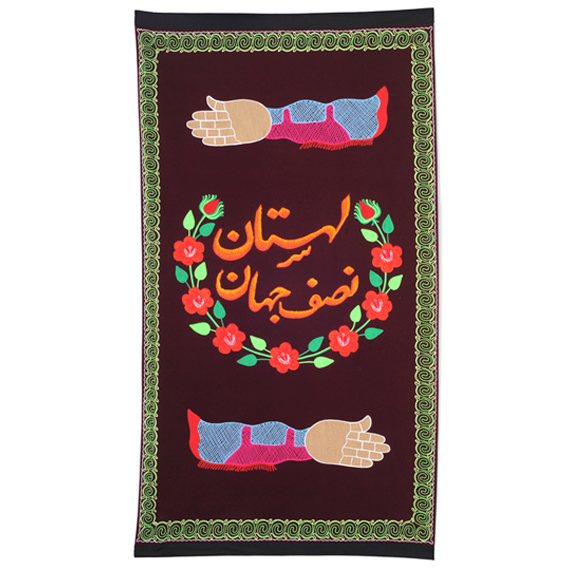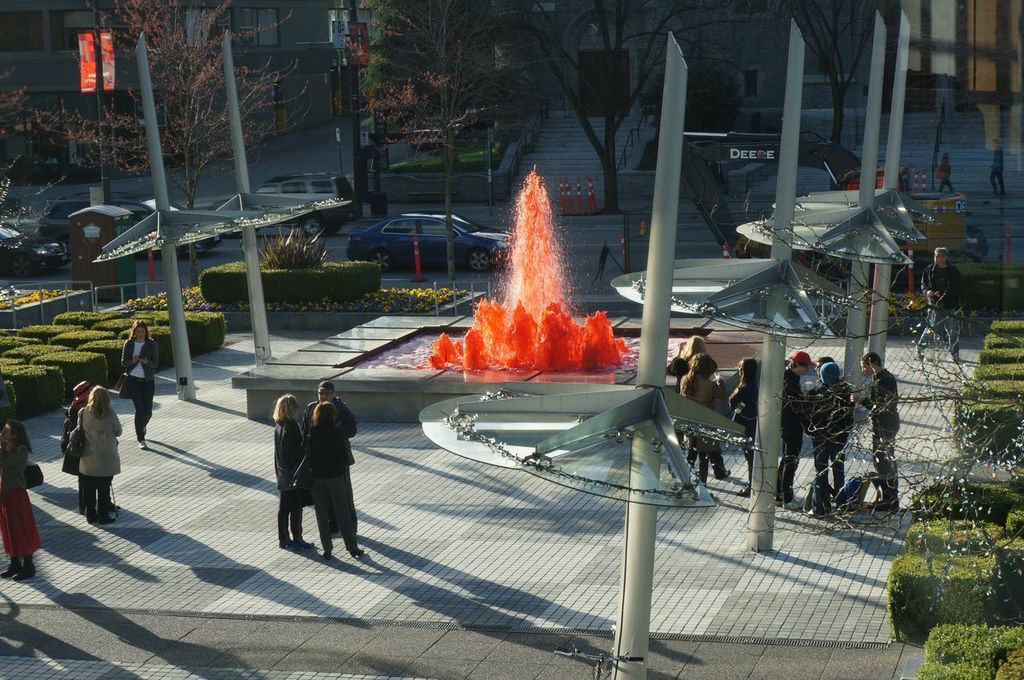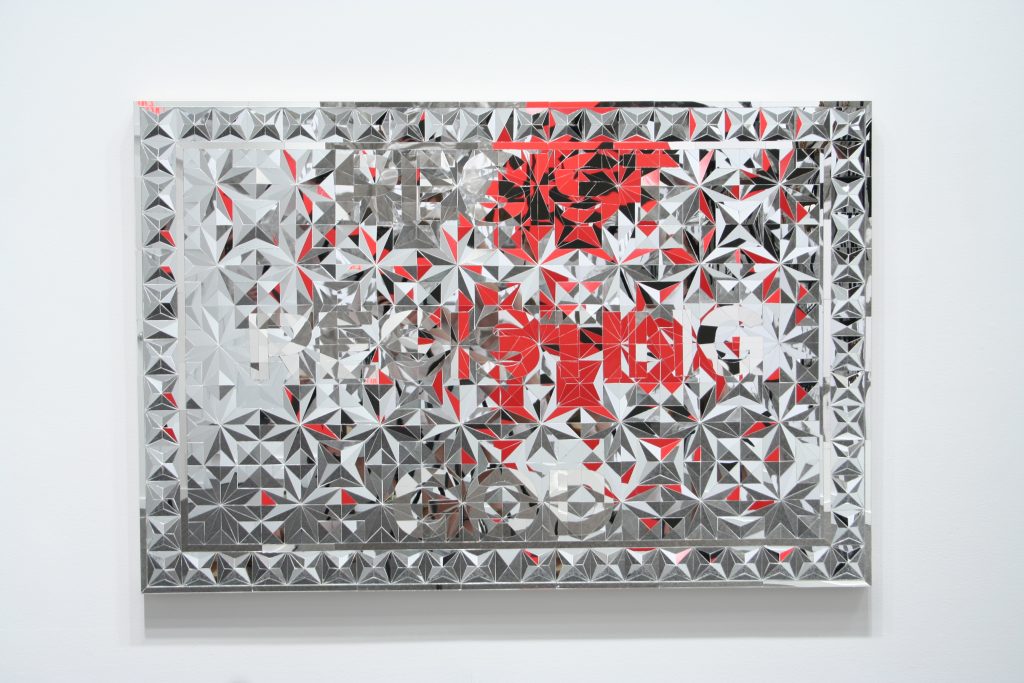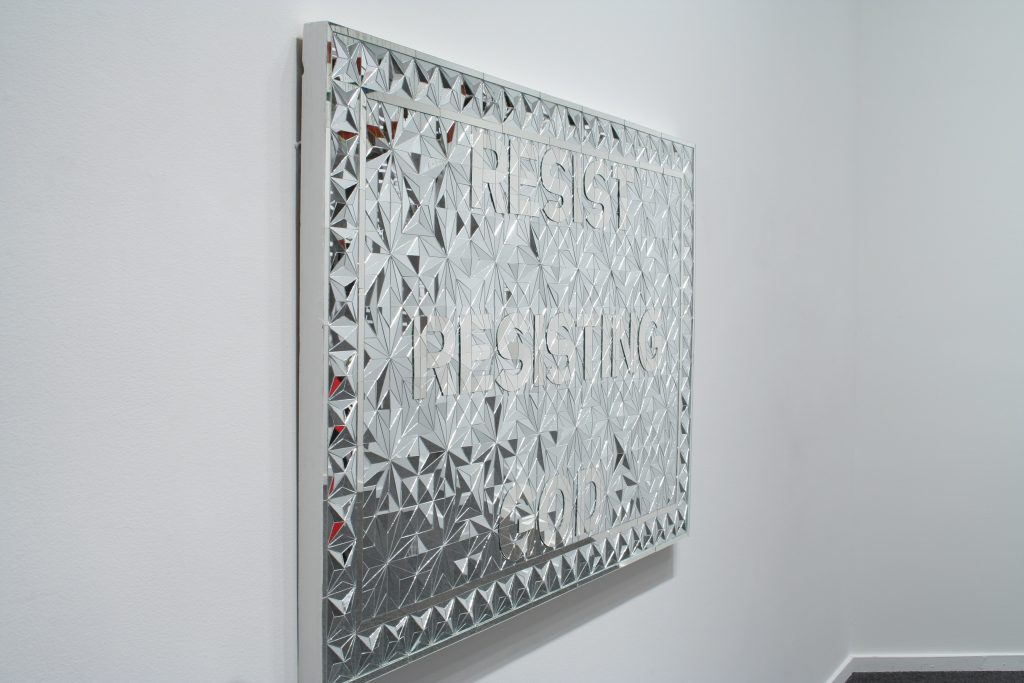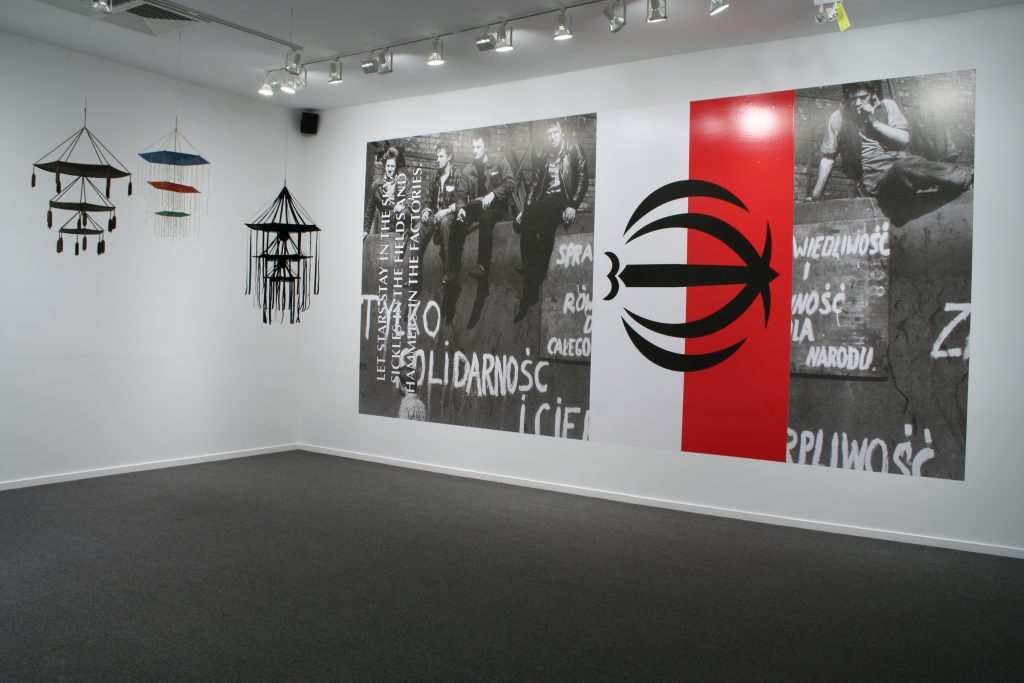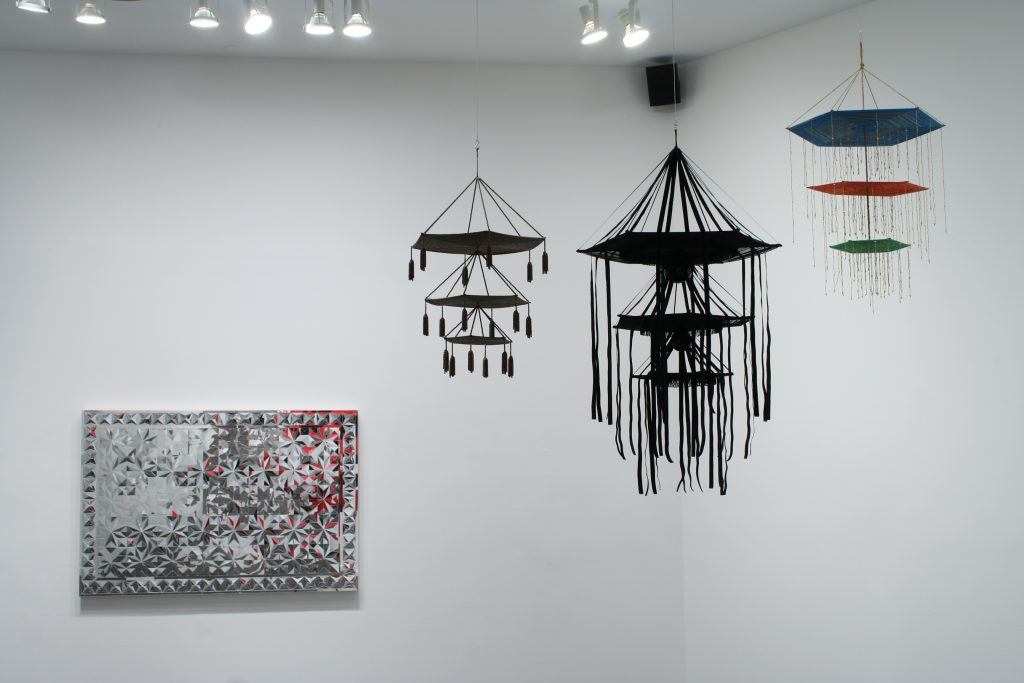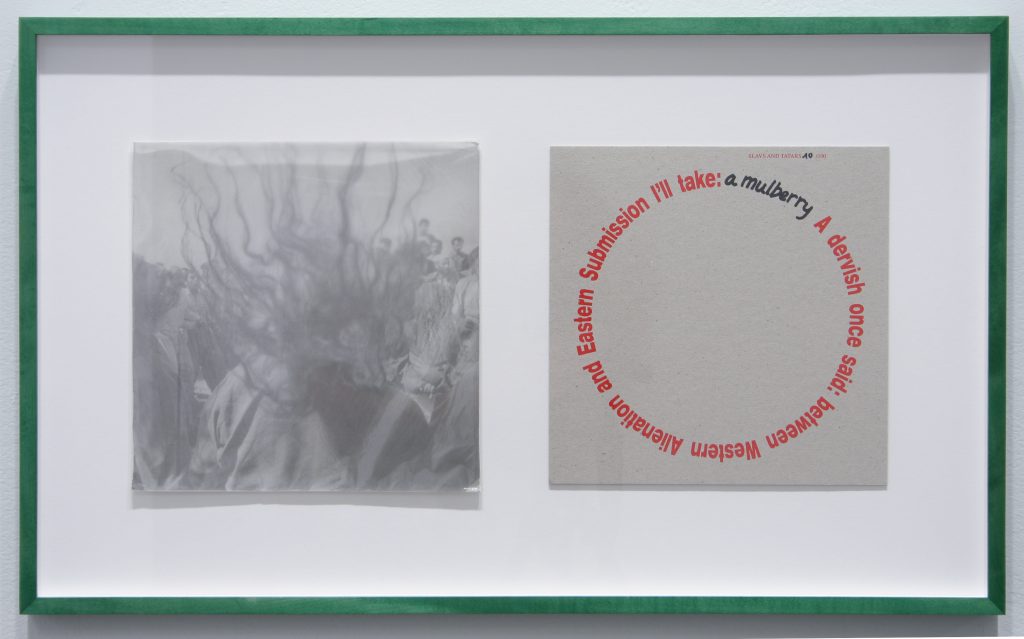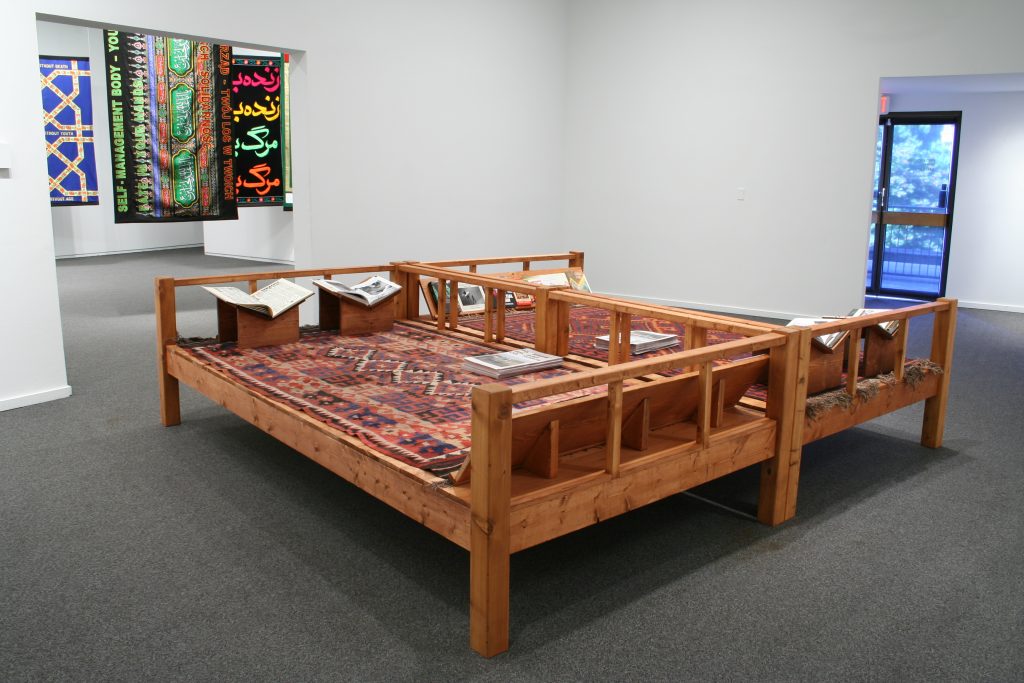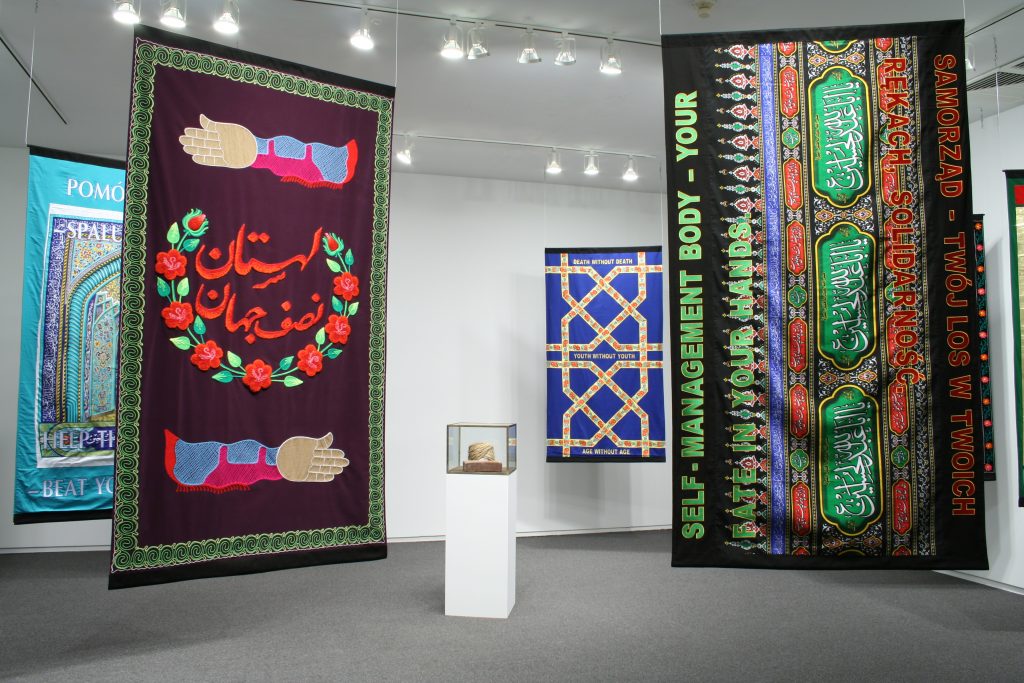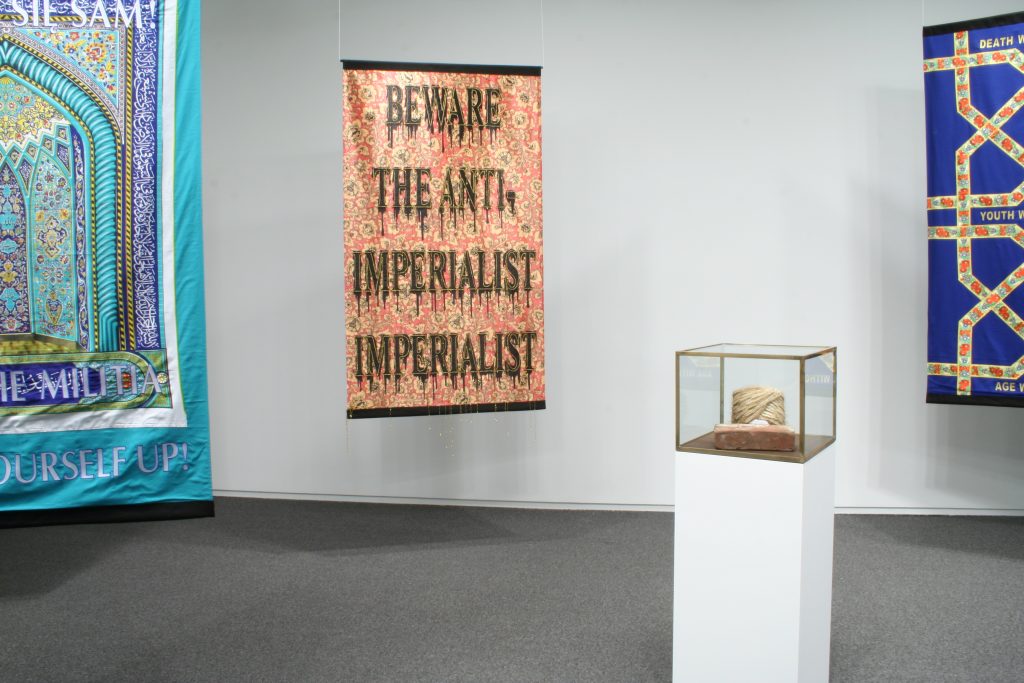Slavs And Tatars - Friendship Of Nations: Polish Shi’ite Showbiz
Curated by: Babak Golkar
This exhibition traces the shared points of convergence in Iran and Poland’s respective economic, political and cultural histories. The project draws on research that stretches from the seventeenth-century Sarmatism movement of the Polish-Lithuanian Commonwealth to the recent Green movement in Iran. It is an investigation into the Iranian Revolution of 1979 and the Solidarnosc (Solidarity) Movement of 1980s Poland – two key moments that bookend the stories of twenty-first century political Islam and twentieth-century communism respectively. Channeling the folklore and artisanal crafts of both cultures, Slavs and Tatars examine the potential for these modes of production to present and redeem hospitality between ideas, faiths, cultures and languages.
Presented in varying forms that range from a complimentary newspaper to a public artwork, the elements brought together for this exhibition include pajaki (originally, Polish folk objects constructed from found materials to give thanks for the year’s harvest), banners, a mirror mosaic, a book archive, a photomural, and a fountain at the plaza of the Sheraton Wall Centre in downtown Vancouver.
Dear 1979, Meet 1989 (2011) is an installation of traditional vernacular Persian riverbeds (takhts) with stands, originally used for holy books (rahle), to display books and printed ephemera from Slavs and Tatars’ archive on the Iranian Revolution and Poland’s Solidarnosc. Historically used across Central Asia and Iran as collective seating, the riverbeds allows for public seating in a place sorely lacking in public space. They provide a place where workers or groups of young men and women can meet, share a meal, tea, hooka (ghalyian) and discuss political views. Here, the riverbeds serve as a resting area in the exhibition that double as a platform for reading, viewing, reflection and discussion.
Resist Resisting God (2009) is a mirror mosaic wall piece inspired by the geometric arrangements of mosaics used in Islamic interior architecture that have become increasingly politically instrumentalized since 1979. The mirror mosaics found in Shi’ite shrines and across the former royal residencies of Iran are examples of the various religious, such as Shi’a and Sunni, and cultural means employed historically by Iranians to distinguish themselves from Arabs. The Arab conquests of the seventh century brought not only Islam but also the highly geometric patterns of Islamic decorative art to the region. The Persians, however, insisted on executing mosaics in a more peculiar, precious manner, employing mirrors instead of wood or ceramics. As Slavs and Tatars have described, “Resist Resisting God extols mysticism as a resolutely progressive and polyphonic voice at the origins of 1979’s promise and all revolutions since.”
Slavs and Tatars is an artist collective devoted to exploring the cultures of Eurasia, which extends roughly from the former Berlin Wall to the Great Wall of China. Their artwork spans several media, disciplines, and a broad spectrum of cultural forms, focusing on an oft-forgotten sphere of influence between Slavs, Caucasians and Central Asians. Their internationally acclaimed projects have been exhibited at the 10th Sharjah, 8th Mercosul, 3rd Thessaloniki, and 9th Gwangju Biennials and Museum of Modern Art, New York.
Exhibition Brochure
Gallery Press Release
Events
Thursday April 11 at 7:00pm | Opening Reception, Artists Tour and Book Launch
Tuesday April 9 at 7:oopm | Artist Lecture, at SFU Woodwards Djavad Mowsfaghian World Art Centre, Room 2555, 149 West Hastings Street.
Wednesday April 10 at 5:30pm | Reverse Joy Launch, at the Fountain in the Wall Center Plaza, Intersection of Burrard and Nelson Street.
